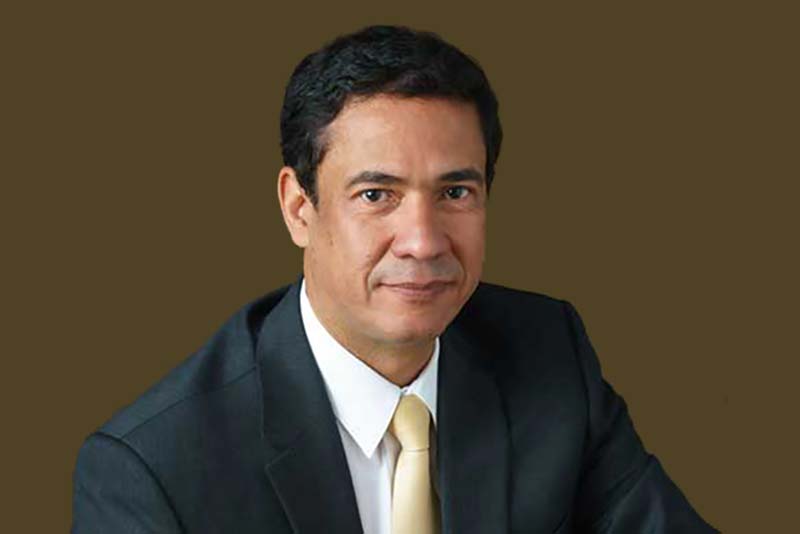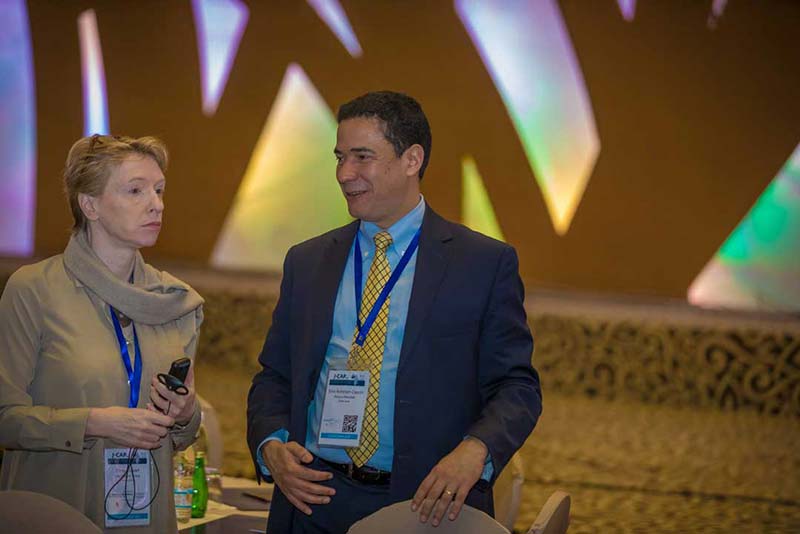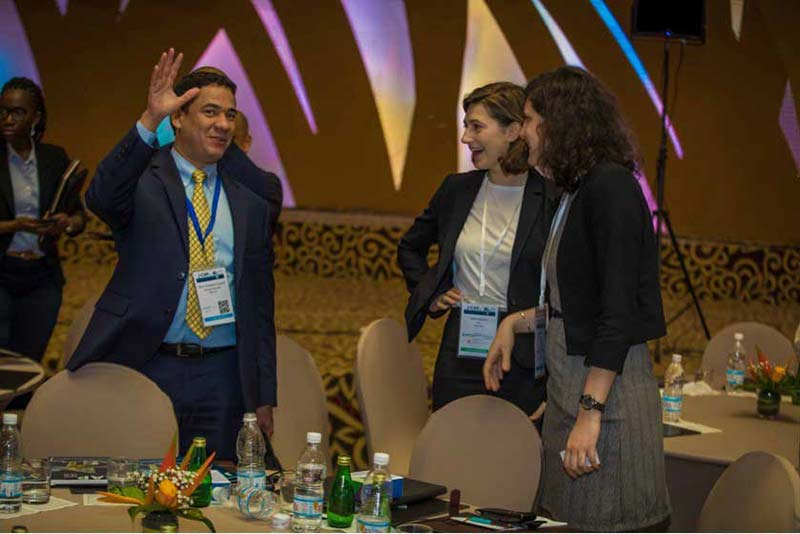In 2017, the World Bank Group (WBG) launched the Joint Capital Markets Program (J-CAP) to help emerging economies gain the financial knowhow and confidence to create their own long-term capital markets. Once dependent on distant banking centers to attract investment, middle-income countries in Africa, Latin America, and Asia have increasingly looked for ways to mobilize their own capital resources to fuel growth and reach environmental and social goals. J-CAP set out to aid them in that endeavor. Anderson Caputo Silva, a soft-spoken Brazilian World Bank financial specialist, played a key role in its design and implementation.
J-CAP works hand-in-hand with governments and regulators to create the conditions in which complex financial instruments, particularly bonds, can be traded in places where they are previously little known. It relies on cutting-edge economic research, but with a pioneering, empirical twist. After delivering technical advice on how to create and regulate capital markets, J-CAP then moves from the theoretical to the practical by carrying out “demonstration transactions,” in which the World Bank or its sister organization within the WBG, the International Finance Corporation (IFC), participate in the launch of the new instruments.
Thus, with its advisory role, J-CAP has become a key player in the growing emphasis on sharing of knowledge and expertise as tools for development and for helping countries promote growth with sustainable goals. With its practical interventions in markets, J-CAP at the same time has become the WBG’s key mechanism in capital markets development.
In its first stages, J-Cap focused operations on Bangladesh, Indonesia, Kenya, Morocco, Peru, Vietnam, and the eight-nation West African Economic and Monetary Union (WAEMU). It has since expanded into Colombia and South Africa, with exploratory initiatives in Serbia and the Philippines. Among other advances, J-CAP has provided essential know-how and technical assistance to support low-income housing finance in Kenya through the creation of the Kenya Mortgage Refinance Company; drafted new regulations to channel venture-capital investments to small and medium enterprises in WAEMU; and advised Peru on creating a new factoring law that allows small businesses to sell accounts receivable to free up working capital.
J-CAP is composed of economists, policy specialists, and investment experts drawn from across the World Bank and IFC, breaking knowledge silos and working with an interdisciplinary, collaborative approach that has few precedents in the WBG. J-CAP’s method has created a noticeable improvement in efficiencies in the WBG’s growing portfolio in capital markets development. The initiative has received financial support from the governments of Switzerland, Germany, Norway, Australia, Luxembourg, Japan, and the Netherlands.
Silva, a former capital markets specialist at Brazil’s Ministry of Finance, with a PhD from the University of Illinois, came to the World Bank in 2006. He sat down with IFC consultant Roger Atwood in Washington to talk about the past, present, and future of capital markets in the global south and J-CAP’s role in fostering them.

Anderson Caputo Silva, Lead Financial Sector Specialist, World Bank Group.
Roger Atwood: Why do developing countries need their own capital markets?
Anderson Silva: Because governments cannot be financing everything through the budget. They’re fiscally constrained. So how do you depend less on public debt and fiscal expenditures? How do you bring private capital to help finance strategic sectors and needs? Capital markets can be fundamental to help countries finance those sectors. When you look at sustainable development goals – the need of countries to invest more in infrastructure, housing, SMEs, climate, everything that creates jobs and potentializes growth – capital markets can play a very important role in complementing what governments provide. And what banks provide. Capital markets are more [suitable than bank loans] for longer-term financing, and that’s critical.
RA: But why is it important that they have their own markets? Can’t they rely on investment from outside?
AS: Ideally you want a mix of international capital flows [into developing economies] and local investment, but the lessons show that strong capital markets depend on a base of domestic, institutional investors, which then helps bring international capital in ways that are sustainable. That way, the domestic market becomes more resilient to capital outflows, and governments and the private sector are better able to get financing in their own currency, reducing vulnerability related to currency mismatches.
RA: What factors need to be in place before a country can develop its capital markets?
AS: Your need to have a stable macroeconomy. You cannot have super-high inflation or a high level of deficits. You need to have a sound monetary and fiscal policy, so that investment can flow. We work on this angle a lot. What is the enabling environment, the regulatory framework [needed] to bring private capital into the setting? And then we ask, which types of instruments would be perceived by investors as something they can trust, something they can invest in for the long term? Also, a key factor of J-CAP is that we select countries. We look into countries with this minimum base of factors [that can lead to] success, a minimum level of preconditions to work from and generate results. Capital markets are not for every country.
RA: Tell me about how J-CAP was created.
AS: It was formed by four main partners in the institution: the financial competitiveness and innovation team, my global practice, which works with countries to create conditions for capital markets development, regulatory frameworks, all the enabling factors; FIG [the Financial Institutions Group of the IFC]; and the World Bank and IFC treasuries. The “joint” is very important, because it integrated different parts of the World Bank Group. […] The origin of J-CAP was that the World Bank’s Independent Evaluation Group did an analysis of the history of capital markets engagement at the Bank, and part of what it concluded was that we were not coming with the full force that we could have. There was fragmentation. We were not taking a programmatic approach, a longer-term approach that would include experts from different areas. Sometimes we’d have a country with a WBG team doing pensions, and another doing the government market. […] Now, with J-CAP, we have teams that work with the investor side, we have pensions and insurance experts, capital markets experts, those who work with regulators, those who work with government debt issuers, those who work with SME finance, and corporate debt and equity. We have teams with expertise in the infrastructure sector – the housing sector, especially. We have these experts, with different sectoral expertise, working on the same country, addressing a full-fledged capital markets development. Sometimes you need to work on the investor side – with pensions or insurance to invest in capital markets – and then you need to work sometimes with governments to create an environment for more sophisticated instruments. In almost all markets, the government offers the first layer of instruments, the so-called plain vanilla ones, and they serve as a price reference for later products and create a yield curve.

Photo: Courtesy of Conseil Régional de l'Epargne Publique et des Marchés Financiers (CREPMF)
RA:Where did J-CAP first start working?
AS: Colombia served as an example, although not with the same governance arrangement or the title of J-CAP yet, but we were able to coordinate the different actors of the WBG in Colombia and form a comprehensive map of actions – a deep dive approach. The IFC and World Bank came and supported the Colombian development bank, the FDN (Financiera de Desarrollo Nacional) and worked on improving the regulatory environment to help develop capital markets. One key issue was that pension funds were not allowed to locate assets in infrastructure. So we worked with the regulator to find out international best practices and adapt them to Colombia, to find prudent ways for pension funds to invest in infrastructure. That work enabled the creation of the first infrastructure debt vehicle in Colombia, into which IFC invested, and that then provided senior debt financing to toll-road projects in Colombia. That investment was a milestone in the aggregation of efforts by the World Bank Group, leveraging investment, advisory, and treasury. We said, why don’t we use that as a model for a joint initiative? So J-CAP became the model for the World Bank to do a capital markets program in a way that would get all the synergies and connect the dots.
RA: You began working in just a handful of countries. Why was that? And how did you decide on the countries?
AS: The idea of J-CAP was that we would grow and include more countries gradually, while recognizing that we must not spread ourselves too thin, because then we lose that purpose of creating a critical mass of engagement. Then a few other elements came into the picture. First, there was a stock-take on what the current engagements were, those that give us some traction already with the authorities, that we could build and improve on. Some of the initial countries in J-CAP were countries with which we already had a substantive engagement but not in a fully coordinated way. We thought it was important to have some degree of diversity in terms of regions and level of economic development. Also, political commitment to capital markets was important, so there is a capacity to deliver to those countries. From time to time we evaluate how many countries we are able to add, and we run consultations to see which have potential.

Innovative Exchange-Traded Fund structure launched in Brazil is being replicated in Peru and Colombia under JCAP. Photo: Courtesy of B3 S.A. – Brasil, Bolsa, Balcão
RA: You mentioned advisory services. How does that work, exactly, and how does that connect to demonstration transactions?
AS: Advisory services are core in designing the reforms that countries need to get capital markets functioning. We do that by identifying investment opportunities, which the IFC team does together with us. And then they see what demonstration transactions can be done. So there is this whole nature of advisory services and demonstrations transactions, and, through them, we see things that need to be solved. It creates a nice cycle.
RA: The World Bank and IFC are both organizations within the WBG. What impact has J-CAP had on how they work together?
AS: J-CAP has made a distinctive [impact] in providing the best institution-wide support that the WBG can deliver and connecting the comparative advantages of different WBG units. We are collaborating to support policy-making, capital markets development, and capital mobilization in the most effective way. It is about helping clients reach their development objectives. J-CAP is delivering results in the acceleration of capital markets reforms. Its demonstration transactions are helping the development of domestic capital markets. For example, in Kenya, we have specialists from different areas of expertise, from government, from markets, to pension specialist, infrastructure specialists, and with IFC all in the same work-and-action program. That didn’t happen before. We have learned to combine forces.
RA: Do you think the World Bank Group was neglecting capital markets before J-CAP? Not making the most of them as elements in development and growth?
AS: I wouldn’t go that far, to say they were neglected, [but] we were not using the full capacity that we had. Now we have enormous gains in efficiency, working with a holistic view. We ask, what do you need from instruments? From regulation? From the investor side? From market infrastructure? It’s a much more robust way of engaging.

Photo: Courtesy of Conseil Régional de l'Epargne Publique et des Marchés Financiers (CREPMF)
RA: J-Cap works a lot on regulatory frameworks for capital markets. Why?
AS: Regulation is core in the work of the Bank. That was always there. The difference now is that in those countries [where J-CAP works] there so many different ways and actions that you need to take for development, that [governments] may need to focus where and in which sequence to spend their limited capacity. We collaborate with regulators in looking holistically at the outcomes they want to achieve. Let’s say the outcome you want is growth. Capital markets can help you promote growth. Or infrastructure. To get it financed, what are the main regulatory agendas you need to have? What are the instruments the regulator needs to create or to enable the market to have?
RA: J-CAP sometimes follows up its advisory services with a demonstration transaction, in which it, for example, sells green bonds or securities on a local capital market. It becomes a player on the market, if only briefly and on a small scale. What’s the logic behind that?
AS: I see two key factors. When you do a demonstration transaction, because you’re involved in that transaction, you can see what the hurdles are. There is an important information element about it. What are the regulatory bottlenecks for this to work? What needs to be fixed in the market infrastructure? You’re clearing the ground for more transactions like that to happen. Second, you demonstrate that these steps can be replicated by the private sector. That’s the purpose. It’s a key value of development financial institutions. Also, the learning [derived from the transactions] in one country can be transferred to others. They guide and focus the work, showing us what needs to be changed. Every transaction that’s done is assessed as to whether the outcomes expected were there, and if there was replicability or not. There is a bit of risk-taking when you’re doing something that is new, and that is very important.
RA: Will a country ever graduate from J-CAP? Could a country reach a point at which its capital markets develop enough that it doesn’t need J-CAP anymore?
AS: Yes, I definitely see that. But there will always be, even in very developed capital markets, areas that are innovative, new frontiers. What I see, and it’s already being reflected, is that those countries that are more developed have more targeted areas, more niche products. In some of these more developed countries, they have an environment where you can test new things, innovations that would be examples [to take] to less-developed countries. So I see different stages. Countries that get more developed, you start to see more specific, targeted interventions. And they can get to a level where you don’t do anything at all, anymore. To answer your question, yes. I see some countries graduating. But a capital market is a process. It takes time.
RA: How long do you expect J-CAP to last? Will it be permanent?
AS: Whether it will be permanent is an institutional decision, but I think the J-CAP concept is here to stay. The approach is proving to be correct, because you have much more impact when you work and overcome obstacles in a coordinated way.
This interview has been condensed for clarity.
Published in November 2022
